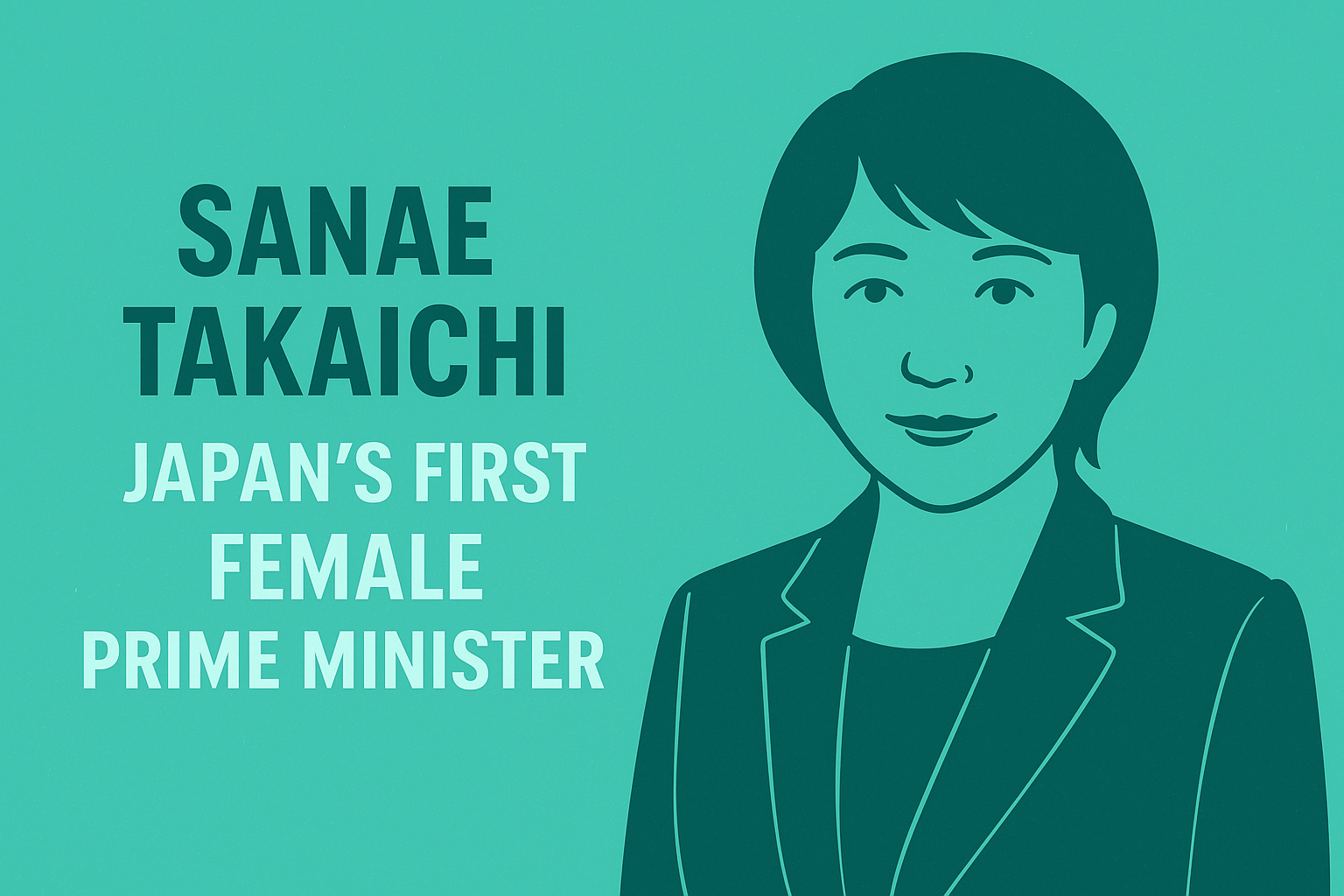By Political Correspondent
Tokyo, October 2025
On October 21, 2025, Japan’s parliament elected Sanae Takaichi as the nation’s 102nd Prime Minister—the first woman ever to hold the office.
Her rise breaks a symbolic “glass ceiling” in a country long dominated by male elites, yet the implications of her premiership reach far beyond gender.
Takaichi’s ascent signals a strategic realignment of Japan’s postwar identity: from economic pragmatism toward a self-assertive, security-driven nationalism.
- I. Ideological Roots: Self-Reliant Conservatism
- II. Washington and the Trump Challenge
- III. China: Between Deterrence and Interdependence
- IV. Korea and Regional Realism
- V. Domestic Policy: The Fiscal-Monetary Tug-of-War
- VI. Governance and Gender: Symbolism vs. Substance
- VII. Global Implications
- VIII. Conclusion
I. Ideological Roots: Self-Reliant Conservatism
Takaichi’s political philosophy can be described as self-reliant conservatism—a blend of economic nationalism, state-led industrial policy, and moral traditionalism.
Economically, she inherits Abenomics’ pro-growth stance but places heavier emphasis on national resilience: energy security, defense manufacturing, and food supply.
Her credo—“the state must protect what markets cannot”—marks a shift from neoliberalism to strategic statism.
Fiscal expansion is central to her agenda. She views public investment not as debt creation but as national reinforcement.
This orientation may unsettle bond markets in the short term, yet it aligns with her broader vision: to restore Japan’s autonomy in an era of fractured globalization.
II. Washington and the Trump Challenge
The first test of the Takaichi administration lies in managing relations with President Donald Trump, whose return to the White House has revived debates over trade imbalances, defense burden-sharing, and currency policy.
Takaichi seeks to deepen the U.S.–Japan alliance while also redefining it.
Her mantra—“autonomous defense within alliance”—encapsulates Japan’s new dilemma: to remain under the American umbrella yet act as a sovereign strategic player.
She favors enhanced defense spending and technological cooperation, even as she resists protectionist pressure on Japanese exports.
In essence, her diplomacy aims to balance dependence with dignity, a formula that will require finesse in dealing with an unpredictable partner in Washington.
III. China: Between Deterrence and Interdependence
A vocal China skeptic, Takaichi has repeatedly criticized Beijing’s assertiveness in the East and South China Seas and vowed to strengthen deterrence around Taiwan.
Her government plans to institutionalize “economic security” measures covering semiconductors, rare-earth supply, and critical infrastructure.
Yet complete decoupling from China is unrealistic: the two economies remain deeply intertwined through manufacturing and resources.
Hence Tokyo’s new doctrine is one of dual posture—strategic distance with economic linkage.
How effectively she manages this paradox will shape Japan’s regional role and the stability of East Asia’s supply chains.
IV. Korea and Regional Realism
Takaichi’s approach to historical issues is unapologetically nationalist.
Her past visits to the Yasukuni Shrine and firm stance on textbook disputes have drawn criticism from Seoul and Beijing.
Still, she is pragmatic enough to pursue cooperation on semiconductor resilience, missile defense, and North Korea deterrence.
She envisions a “free and secure Indo-Pacific” where Japan acts as an infrastructural and financial hub, leveraging ODA diplomacy to deepen ties with ASEAN nations.
Such outreach could re-establish Japan as a middle-power convener amid intensifying U.S.–China rivalry.
V. Domestic Policy: The Fiscal-Monetary Tug-of-War
Domestically, the prime minister promises a large-scale stimulus package—fuel-tax cuts, local subsidies, and supplementary budgets—to cushion households from inflation.
This fiscal activism may collide with the Bank of Japan’s cautious normalization, creating the first serious policy-mix tension in a decade.
Markets have already coined the phrase “Takaichi Trade”—stock-market rallies, a weaker yen, and stable yields.
But prolonged debt issuance could push rates higher, testing investor confidence in Japan’s fiscal credibility.
The timing of any pivot from expansion to consolidation will determine her government’s longevity.
VI. Governance and Gender: Symbolism vs. Substance
Although Takaichi’s election is historically groundbreaking, her cabinet includes only two other women.
Foreign media such as Le Monde and The Guardian note that symbolic change has not yet translated into structural reform.
Her conservative feminism emphasizes responsibility and self-discipline rather than state-driven gender quotas—an approach that resonates with traditionalists but draws skepticism from progressives.
Whether she can reconcile symbolic leadership with tangible empowerment will define her social legacy.
VII. Global Implications
Takaichi’s Japan could reshape the Indo-Pacific in three ways:
- Strategic Clarity: A more explicit deterrence posture toward China and North Korea.
- Economic Nationalism: A revival of industrial policy that may ripple through global supply chains.
- Fiscal Experimentation: A test of whether advanced economies can sustain debt-financed rearmament without destabilizing markets.
In short, her rise encapsulates a broader trend—the return of the nation-state as the primary actor in geopolitics.
VIII. Conclusion
Sanae Takaichi embodies the paradox of Japan’s new era: a female pioneer who champions traditional conservatism; a fiscal expansionist who preaches discipline; a nationalist seeking global credibility.
Her premiership is not merely a milestone for gender equality—it is a referendum on Japan’s strategic identity in the 21st century.
Whether she succeeds will depend on her ability to transform symbolism into policy and pride into performance.
Japan’s long-dormant question—“What kind of power should we be?”—is, once again, on the table.
This time, the answer will come in a woman’s voice—firm, deliberate, and unapologetically national.


